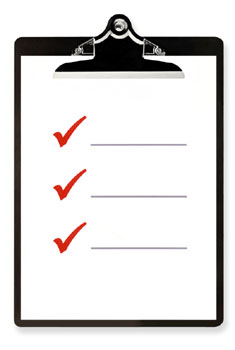 In the last two issues we have looked at preparing and writing a report. The third and final stage of report writing is to check your report. Make sure you are methodical when checking, no matter how much you feel you know what you have written: start at the top of page one, and keep going until the last line of the last page!
In the last two issues we have looked at preparing and writing a report. The third and final stage of report writing is to check your report. Make sure you are methodical when checking, no matter how much you feel you know what you have written: start at the top of page one, and keep going until the last line of the last page!
When you have finished writing your report, run spellcheck on it, then take a printout and leave it for as long as possible (preferably a day or two) so you can read it with fresh eyes. It may be worth asking somebody else to read it as well, as they will spot mistakes not noticeable to you. See the ten points below, which are divided into three stages, for checking longer reports. For shorter reports, check everything but you will be able to check all the points at once.
Stage 1: Check text for sense, spelling, punctuation and grammar
1. Does it make sense? Is it in logical order? Is there an introduction clearly stating the purpose of the report, whom the report is for, the method used, any parameters that you’ve worked within and a map of how the report is structured?
2. Check the words your have used: their spelling; the most appropriate, simplest and specific; avoid clichés, tautologies and extra words; beware of commonly confused words; check comparatives and superlatives; check your choice of words (jargon/tone); check consistency throughout the report; and finally, check if the word or phrase you are using is actually one word, is hyphenated or should be separate words.
3. Check sentences: especially word order. Try to make sure you write in the active voice (subject first, verb second); that you have put the most important idea at the beginning of the sentence; that you have avoided ambiguity; and that the sentence is between 10 and 20 words long.
4. Check grammar: subject and verb agreement; active versus passive; correct tenses; avoid split infinitives.
5. Check all punctuation: pay attention to apostrophes, use of colons, semicolons and question marks; that you have pairs of quotes and brackets. (Double-check your questions and see if you mean to ask a question or if you mean to make a statement.)
Stage 2: Check paragraphs, section and page numbering, and other figures, e.g. adding up, column alignment, dates.
1. Check paragraphs: one theme, a topic sentence to introduce it and connecting words between paragraphs to maintain the flow.
2. Check consistency: words, names, dates, matching salutation and ending, spelled-out numbers versus figures, section and page numbering.
Stage 3: Check house style, formatting, spacing and margins
1. Check that your document matches your house style or writer’s style. You may also need to consider your reader’s style!
2. Check headings, paragraph numbering, subparagraphs and bullet points.
3. Check formatting, especially if you have imported sections into your report, or have cut and pasted parts of your report from other documents or drafts. A quick way is to hold the document at arm’s length and look at the shape of each page.
By checking all the above points to make sure your report is accurate, you are less likely to distract or alienate your reader. Having invested your time and effort in writing and producing your report, you do want it to be read!

